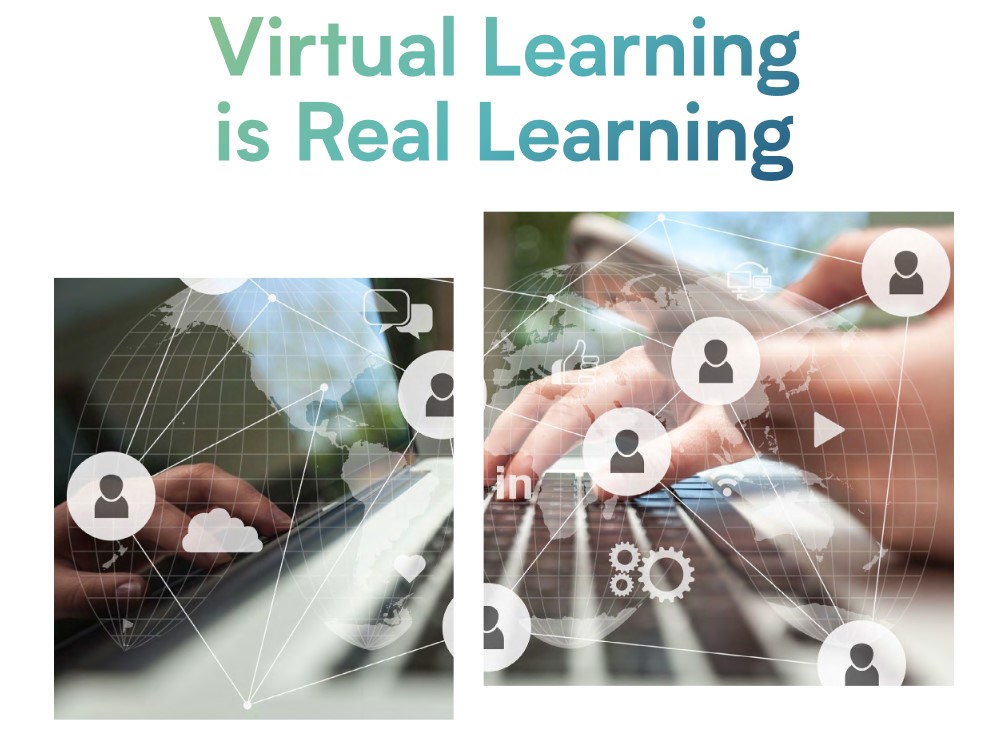5 Recommendations to Integrate Rich Additional Content into the Virtual Classroom, and What Virtual Learning Experts® Need to Know
This is part of an ongoing column by Virtual Learning Expert Jennifer Finan. She’s exploring trends that impact virtual classroom trainers and designers to improve learner engagement in the hybrid virtual classroom.
Are Apps The Key To Integrating Content For Increased Engagement?
As Virtual Learning Experts become more experienced with the virtual classroom experience, it’s only natural for them to start wanting to add the ‘bells and whistles’ to make their programs even more engaging. With a plethora of third-party apps available for content integration, apps may be just the bells and whistles that virtual training needs to keep engagement up.
What Do We Mean By “The Rise Of The App” and Why Is It Trending?
One way to do that is to include activities using third-party apps such as Kahoot, Twiddla, Beekast, Slido, Mentimeter, and Jamboard. There are thousands of apps to choose from for learning facilitation and increased engagement. You can use various types of apps to bring virtual training to the next level of engagement depending on the type of content you want to share. Before you spend hours researching them all, consider their impact on learner engagement first. Let’s dive in.
What Impact Do Third-Party Apps In The Virtual Classroom Have On Learner Engagement?
According to Slido, it “gives you everything you need to engage your participants, capture their views, and make everyone feel connected.” Mentimeter says it will “build an immediate connection with your audience and make them a part of your presentation”. Other apps promise similar, and if we consider the use of apps in the context of our InQuire Engagement Framework, we would agree that Apps can have the following impacts on engagment:
- They Can Nurture Emotional Engagement. When apps introduce fun activities or a little friendly competition, they can nurture emotional engagement. If learners are having fun and enjoying the activities, they’ll be more emotionally engaged.
- They Can Stimulate Intellectual Engagement. Using apps can provide different ways of engaging online learners as well as opportunities to apply the content. Answering questions in a competitive quiz is one possible example available in third-party apps. Apps allow different ways for learners to express their thoughts. This may include using word clouds to identify common themes. They can also be used to help learners organize their thoughts through card-sort-type activities.
- They Can Foster Environmental Engagement. Using a third-party app changes the learning environment. If the app is integrated into the virtual learning platform, the learner may not need to do anything to access the activity. However, the chat or participant panel is likely to move to make way for the app, so their screen will change. If the app is not integrated, they may need to switch their attention to their phone to scan a QR code or open a browser to participate. This change in environment will work well if they’re already engaged. There can be a risk with this transition though. If the app is tricky or prone to technical errors, you’ll have learners leaving the class frustrated. Transitioning to phones can also make it harder to bring their attention back to class. If learners are not engaged with the activity because seems too silly or doesn’t feel psychologically safe, it’ll be harder to bring them back to the class.
5 Recommendations For Integrating Rich Additional Content Into The Virtual Classroom
- Do you need one? Consider what value the app will add for the learners. Virtual classroom platforms come with so many interactive tools already in place, that there is no point using an app when the platform can do the same job. Ensure adding the app will add to the virtual classroom experience, rather than detracting from it.
- Choose wisely. There will be various factors to consider when deciding on which apps to adopt for engaging online learners. Most will incur some costs. Many apps will provide a variety of interactions to choose from, but they usually don’t do everything. Consider whether you need whiteboards, word clouds, quizzes, card sorts, or something else, and make sure the app you choose can do them all. Always consider ease of use when choosing an app for virtual training. It must be easy for the instructional team and easy for learners to navigate as well.
- Consider everyone. If one of your main reasons for adding apps is to be more inclusive, consider how easy it is for all learners to use. Check what is visible and how easy it is to navigate on a mobile device. Check what options there are for accessibility and non-native English speakers.
- Rehearse. Take the time to go through the activity as a learner and as a facilitator to check that everything works as planned. This will help to avoid operating errors like knowing exactly when to click so you don’t spoil a quiz by revealing the answers.
- Have a Plan B Always. Just because something works one day doesn’t mean it’ll work the next! It’s integral to have a backup plan so you’re not scrambling in the event of a technical error.
What Do Virtual Learning Experts® Need To Know About Using Third-Party Apps In The Virtual Classroom?
Virtual Learning Experts® need to understand how the apps work in the virtual classroom design so that they can support learners and maximize engagement.
- Virtual classroom designers need to know what apps are available and how they could add value to your programs. They need to know how they work so that they can provide clear instructions to the instructional team. It’s also important for designers to be able to set the activities up and create a process to ensure activities are reset for use in other programs or cohorts. Designers also need to know that the app will enhance the virtual classroom experience, rather than detract from it. Designers need to stay strong and avoid ‘shiny object syndrome’. Otherwise, you’ll end up adding apps just for the sake of it.
- Virtual classroom facilitators need to know how to work the app and how to instruct learners to use the app. They also need to know how to troubleshoot common issues for facilitated virtual learning and run a similar activity if the app cannot be used for any reason. Facilitators need to know how long learners will need to access the activity and how much time to spend on the debrief.
- Virtual classroom producers need to know how to support both the facilitator and the learners with the third-party app. They may need to set the activities up or start them. Producers may also need to know how to share the results with the class. Virtual classroom producers need to be able to support all learners, including learners who are using mobile devices, Macs, and PCs.
- Virtual Learning Leaders need to know what apps are available to the instructional team. A certified Virtual Learning Coach needs to ask questions to ensure the right apps are being used for the right reasons. They can ask questions to help the instructional team decide when an app is enhancing learner engagement and when it’s not.
Learn More About Apps For Content Integration and Teaching Tools For Virtual Classrooms
Master the art of the app by learning how to identify which apps could support your training initiatives. Feel confident in finding apps that will enhance your learners' knowledge and maximize learner engagement.

 Jennifer Lindsay-Finan
:
Jun 7, 2023 11:00:00 AM
Jennifer Lindsay-Finan
:
Jun 7, 2023 11:00:00 AM


![[Infographic] Creating the Perfect Blend](https://blog.insynctraining.com/hubfs/InSync%20Training%20Creating%20the%20Perfect%20Blend.jpg)
